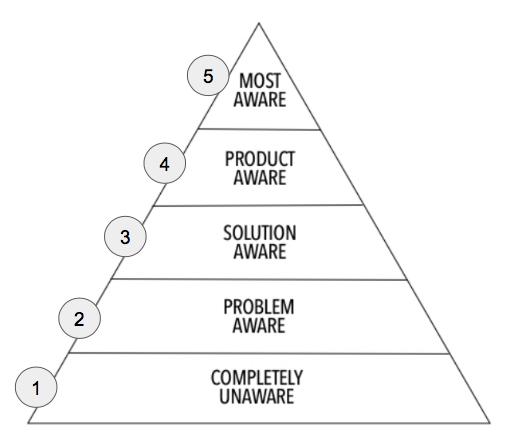Tapping into how people buy is the driving force of conversion rate optimization. Yet not all products are purchased the same way. One such example are direct to consumer health related products, such as a natural health supplement, or natural food product, and even medical equipment.
Selling health products online is different that selling other kinds of products. People don’t buy health the same way they buy anything else. There are a number of different reasons for this but fundamentally it comes down to trust and belief. Both are activated differently in the mind when buying a health related product compared to another product category.
For other products it’s more about usability and persuasion, but when it comes to selling health, you’re not in the business of changing minds, you’re in the business of tapping into awareness.
The Pulse of The Marketplace
In a previous article we looked at the concept of marketplace awareness which ties into marketplace sophistication and how that fits into how we market to health buyers and what their unique purchase journey looks like.
When we look at the market it’s broken up into these 5 stages of awareness:
- Completely Unaware – Your prospects are not aware of their problem or the need for a solution.
- Problem Aware – They are only aware of the problem and nothing else.
- Solution Aware – They are aware of the problem and the different solutions available to them.
- Product Aware – They are aware of the problem and the solution.
- Most Aware – They are aware of what you offer and how it meets their needs.

If we optimize for one awareness level but the marketplace were attracting and the traffic source were getting that traffic from is from a different level of awareness of our product, problem or category, then the mis-match will cause a conversion problem.
Often times health marketers miss this critical concept and many standard conversion optimization agencies don’t even have a clue why they are only getting a minimal lift. Often times they think the problem exists on the landing page itself, and thus they begin by optimizing the page. When the real problem is actually a more nuanced one. The real problem lies in the marketplace not the landing page.
It’s Not As Clear Cut As Which Market Segment Should You Optimize For?
It’s not as easy and clear cut as picking or knowing what stage of awareness to optimize for however…
The marketplace is composed of segments that span across all the stages of awareness at the same time. And the marketplace and traffic sources don’t actually fall into one bucket like a game of Plink-O. The actual marketplace is not so clear cut, it’s spread across all of these buckets at the same time.
Completely Unaware >> Problem Aware >> Solution Aware >> Product Aware >> Most Aware
The key to optimizing revenue in the online health market is not about picking one stage, because the market is fractured and your traffic source is never ever clean in terms of marketplace stages.
The trick is about knowing where the market is collectively and how your traffic source effects that. If your traffic source is composed of mostly affiliates or joint ventures, then you need to get on those affiliates lists emails for a few months before developing your campaign in order to understand your market. If your traffic source is Facebook or Google/Bing PPC then spend some time searching on relevant keywords and listening to conversations on social media to understand what stage that traffic source is at. Both are at compleatly different stages and there’s always crossover.
How Does This Apply To The Health Buyer Online?
Just like there are different stages of awareness, there are different types of health buyers within each awareness segment.
There are the super users that take a lot of different supplements and their kitchen closet looks like a pharmacy and there are those who take supplements but don’t like taking many pills and the thought of taking 12 pills a day makes them believe they are drug addicts, or that they are addicted to pills. These are the same people that hold onto their prescription medications for months or years, not taking the full dosage as instructed by their doctors, just to have some a year or two from now… just in case they might need them but are afraid of them at the same time.
Then there’s the group that are non-supplement (pill) buyers. They don’t take supplements or vitamins routinely except for the occasional times they are sick or during flu season. However, this group of anti-supplement takers are usually willing to buy alternative forms of supplements like creams, and foods like drinks and chews.
Knowing where the marketplace is is vital to how you craft your supplement marketing funnel.
Architecting Conversion Rate Optimization Around The Market
By designing your revenue and conversion rate optimization plan around the awareness stage that’s tied to your specific micro segment of the marketplace, i.e. the traffic source and the awareness and sophistication of that particular source, you can get bigger gains than the standard 10 – 20% lift of an average conversion optimization test.
Three Funnels Every Health Supplement Business Needs To Build A Multi-Million Dollar Empire
Through our work in the online health space, we’ve optimized many dietary supplement businesses. In that time, we’ve uncovered the three critical funnels for success.
Get your ebook with our findings delivered right to your email for FREE.